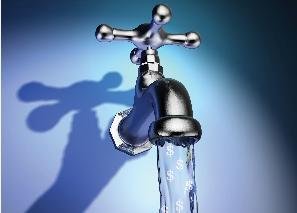U.N. Secretary-General Ban Ki-moon is a man with a mission; he recently announced that he is inviting world leaders to a “critical high level meeting†in September 2008. Among the goals for this meeting is halving the number of people who lack access to safe drinking water by 2015, particularly in Africa. Ban Ki-moon is pushing this to the top of his agenda because he sees a significant connection between water scarcity and armed conflict. More
Related Posts

Top 3 Benefits of Using SCADA in Water Treatment Plants

Water Resource Engineers: What They Do And Why We Need Them

How to Help Prevent Winter Water Pollution
U.N. Secretary-General Ban Ki-moon is a man with a mission; he recently announced that he is inviting world leaders to a “critical high level meeting†in September 2008. Among the goals for this meeting is halving the number of people who lack access to safe drinking water by 2015, particularly in Africa. Ban Ki-moon is pushing this to the top of his agenda because he sees a significant connection between water scarcity and armed conflict.
While meeting with business and political leaders at the World Economic Forum in January, he made a case to put water shortages at the top of the global agenda this year and to take action to prevent conflicts over scarce water supplies. Ban Ki-moon reminded his audience that the conflict in Darfur was triggered by a drought and that the peoples of Chad, Columbia, Israel, Haiti, Kazakhstan, Nigeria, Somalia, Sri Lanka and the Palestinian territories all live with poverty and social hardships that are exacerbated by water shortages in their region.
The Secretary-General went on to state that a recent report by International Alert identifies forty-six countries where climate change and water-related crises create “a high risk of violent conflict†and those forty-six nations are home to over 2.7 billion people. Additional nations were identified as “at risk.†“Too often, where we need water we find guns instead,†said the Secretary-General. “Population growth will make the problem worse. So will climate change. As the global economy grows, so will its thirst. Many more conflicts lie just over the horizon.â€
Ban went on to say that he welcomed the Forum’s focus on water issues in 2008. Water is scarce, but “we need to adapt to this reality, just as we do to climate change,†said Ban. “There is still enough water for all of us — but only so long as we can keep it clean, use it more wisely, and share it fairly.†The CEOs of the Coca-Cola Company, Dow and Nestle all voiced publicly their support for Ban’s agenda to reduce water scarcity in the developing world by 2015. Said Andrew Liveris, chairman and CEO of Dow Chemical Co, “Water is today’s issue; it is the oil of this century, not a question.â€
It is certainly heartening to see so many in industry and government embracing the Secretary-General’s challenge. The real question that must be asked by this group is, “How will we accomplish our goal?†The world’s leaders are committed to bringing clean water to billions – in just seven short years. With the support of so many in industry, it is looking like the money to accomplish the plan will be available. The only major hurdle that appears to remain is the practicality of the job. In essence, what technology can bring water to that many people so quickly?
Perhaps the best technologies in this case are some of the oldest. Wells and irrigation canals can be dug quickly, with locally available labor and limited needs for infrastructure and equipment. Couple these projects with on the ground, “in the village†support by UN and NGO personnel and it just may be a recipe for success. The aid workers in the villages can work with the local families and elders to develop a locally-sustainable and more importantly locally-supported plan for water distribution in each village. Where will the well(s) be located? What about the irrigation ditches? Will the system reach everyone in need? These types of questions must be answered in the next year or two so that the construction of the projects can begin soon after. In the absence of the ‘planning’ phase, conflict will inevitably erupt during or after the construction – “my home is too far from the well†or “the well is on my land and you cannot take from itâ€. Such conflict would not only defeat the purpose on Ban’s plan, but would also make it virtually impossible to achieve his plan’s goals.
With coordinated, on the ground planning, the Secretary-General’s dream can begin to become a reality. Imagine a new era in just a few short years where farming and prosperity are taking hold in regions where, up until recently, violence, poverty and drought were the norm. Imagine what the improved agriculture could do for famine and what the more sanitary conditions brought by fresh water could do for disease. Every effort should be made to make the Secretary-General’s plan a model for bringing fresh, clean water to the next half of those who do not today have access to it.
Related Posts

Top 3 Benefits of Using SCADA in Water Treatment Plants

Water Resource Engineers: What They Do And Why We Need Them

